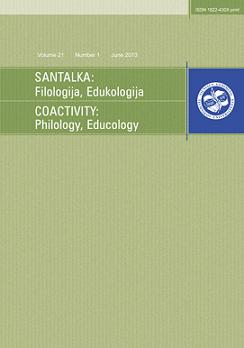Probleminio Mokymosi Proceso Privalumai Ir Trūkumai: Dėstytojų Požiūris
Advantages And Downsides Of The Problem-Based Learning Process: Teachers’ Approach
Author(s): Vaclovas Šveikauskas, Liudmila Kirikova, Irmantas Ramanauskas, Dalija Gudaitytė, Raimonda BrunevičiūtėSubject(s): Language and Literature Studies
Published by: Vilnius Gediminas Technical University
Keywords: problem-based learning process; problem-based learning system; educational competence; tutor.
Summary/Abstract: Problem-based learning (PBL) is a strategy of studies based on the interaction between students and the teacher, which is characterized by a systematic independent cognitive activity – i.e. acquiring new knowledge and mastering new modes of activity by tackling practical issues. This paper is based on the obtained findings of our study, and analyzes the attitude of the teachers of the Faculty of Medicine of Lithuanian University of Health Sciences towards the principles of the system of problem-based learning, the roles of the teacher and the student within this system, and the quality of acquired knowledge. The results of our study showed that the future tutors had positive attitudes towards problem-based learning because they identified the advantages of PBL, which could be associated with the possibilities for the creation of the effective learning environment. Through positive or critical evaluations of the manifestations of PBL, teachers can also set aims for the improvement of their own educational competence to ensure the effectiveness of the educational environment that they are creating. In our study, the advantages of problem-based learning were associated with the creation of an effective learning environment, ensuring and maintaining competence-based and psychological conditions of such environment. The downsides of PBL were associated with the creation and maintenance of suitable organizational conditions.
Journal: Santalka: Filologija, Edukologija
- Issue Year: 21/2013
- Issue No: 1
- Page Range: 24-34
- Page Count: 11
- Language: Lithuanian

